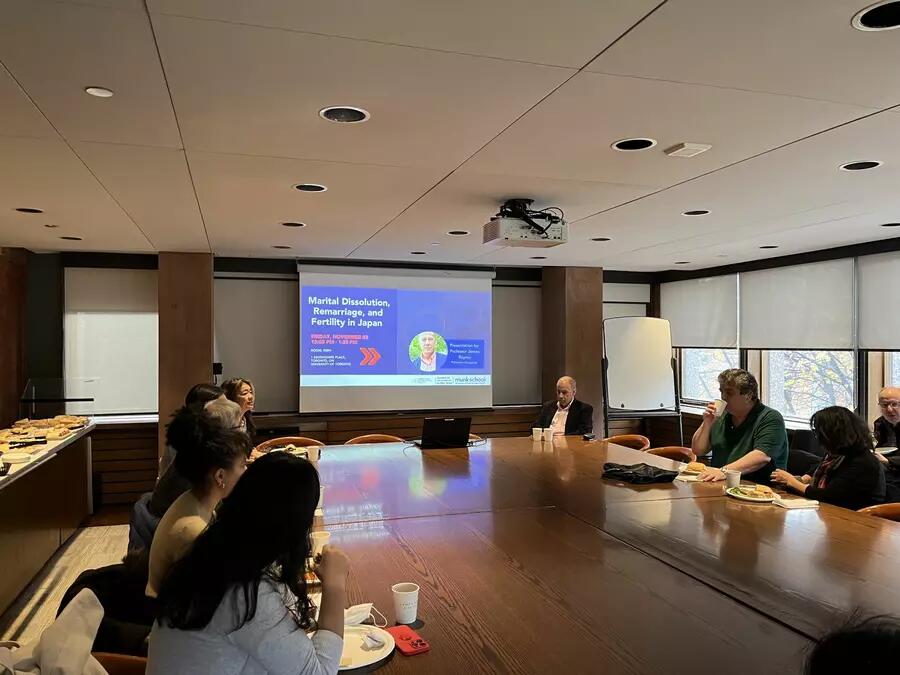
Event Report: Marital Dissolution, Remarriage, and Fertility in Japan
On November 3rd, 2023, the Centre for the Study of Global Japan hosted Professor Jim Raymo, Professor of Sociology and Henry Wendt III '55 Professor of East Asian Studies at Princeton University, for a presentation on marital dissolution, remarriage, and fertility in Japan.
Raymo began by presenting data on Japanese fertility over time. Fertility rates have been decreasing for several decades in Japan, with significant implications for Japan’s society, economy, and geopolitical standing in the world. In 2020, 30% of the Japanese population was older than 65. Raymo then considered the relationship between marital behaviour and fertility rates. He noted that there was well-established scholarship about fertility in first marriages but relatively little focus on divorced and remarried individuals. For example, remarriage could be associated with either higher fertility or lower fertility – children could be a commitment device for remarrying couples, but such couples may also be less inclined to have children after their initial marital experience. Raymo used counterfactual analysis to assess how remarriage may contribute to Japan’s evolving fertility rate. In terms of policy prescriptions, he recommended among other things that the Japanese government should consider policies that address the economic concerns of both young couples and remarried couples.
Following the panel discussion, there was a lively question and answer session. The audience asked questions about the relationship between fertility in Japan and in other countries, the implications of an increasing trend toward lifelong singlehood, and the utility of counterfactual analysis in understanding demographic trends. We would like to thank Professor Raymo for sharing his fascinating research findings, as well as the audience that was in attendance for an engaged Q&A session.

